HiveChess Lecture - The French Defense
5 comments
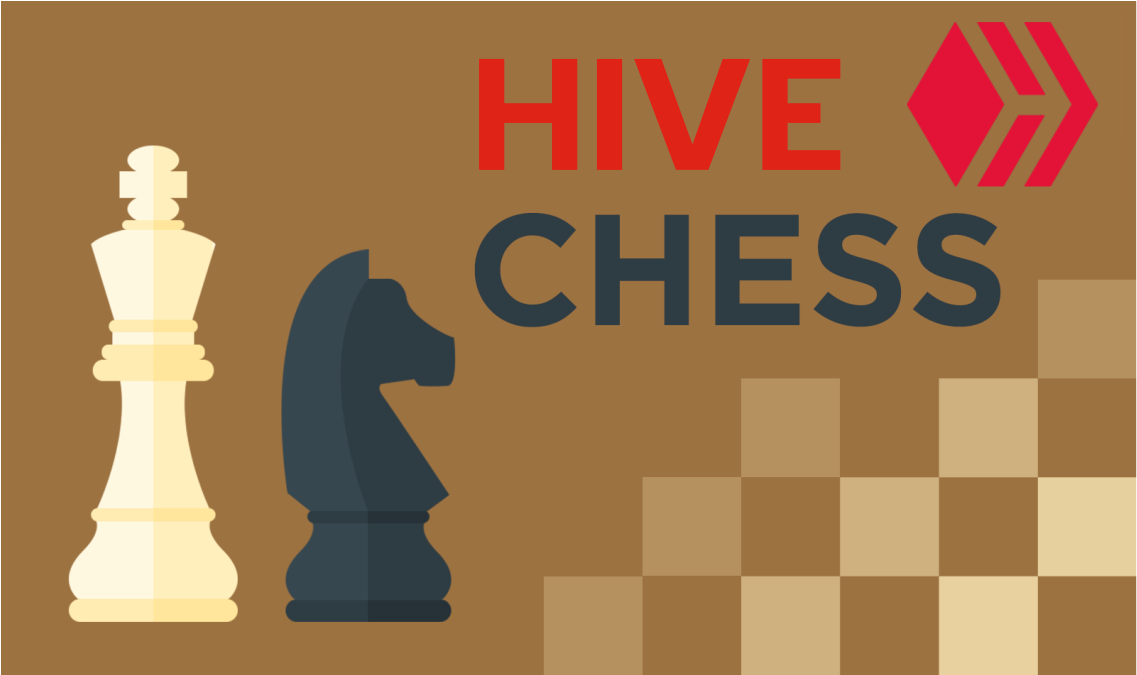
Hello Hivians and Chess players,
Welcome to another HiveChess lecture, this is a new idea where I will be talking about some random chess topic, it could be an opening, or it could be a tactic I find worthy or share, or anything else. The bottom line is that it will be something chess-worthy that you all can learn from.
In my previous lecture, I spoke about the Scandinavian Defense. If you have seen it, I recommend you check it out on my blog. So in today's lecture, we will be looking at the oldest chess opening called The French Defense.
- e4 e6
- d4 d5
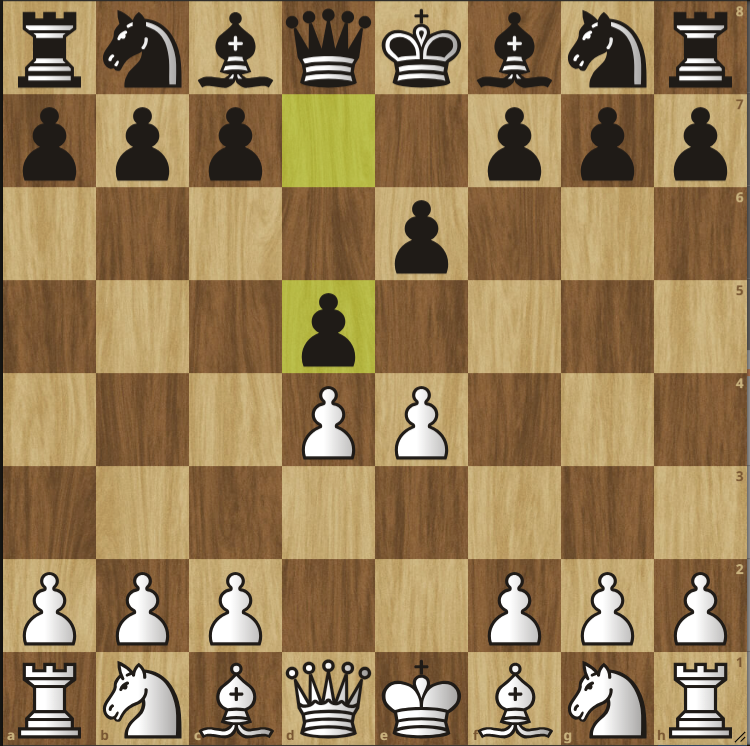
The opening involves black contesting the center squares with white on the get-go. No time wasted, let's get down to action with d5. I find the opening comforting if you are a player who wants to lean towards positional play while punishing your opponent's inaccuracies or worse blunders when they make one.
While studying this opening back then in university with my friend, I knew that one thing was for sure with this opening, you have to be prepared to trade off your white-squared bishop and break with c5 after developing your minor pieces.
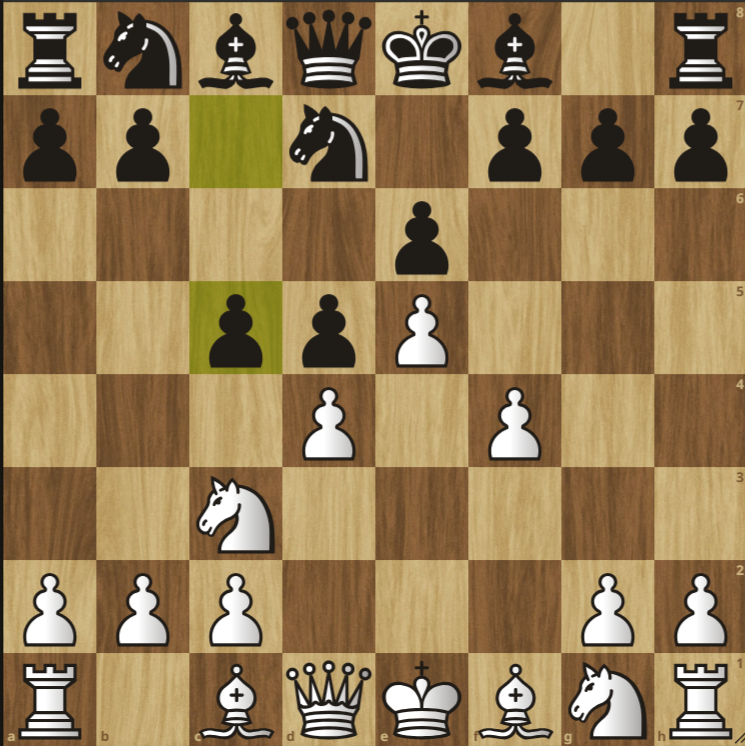
The entire idea behind the opening involves white attacking on the kingside while black attacks on the queenside. More like a race of who is going to be the first to gain a winning advantage.
It is important to know that when playing the French Defense, you should be prepared for a closed position filled with maneuvers, and when the slightest opportunity comes up, explore tactics.
Although the opening is not popular among chess players, it remains enticing to others due to its complexity and solid structure that comes from the pawn formation.
In the last world championship against the current world champion Gukesh, Dommaraju, who was the challenger back then against former world champion Ding Liren, the French defense was Ding's choice, and he played it well like the solid chess player he is.
This was the new novelty, Ding played in this game, which goes beyond the move order for the French Defense. If you remember vividly well, in my post about chess book vs chess engine vs getting a chess coach. I spoke about the concept of how new updates could be made to chess moves in a book, thereby bringing a new upgrade to the previously established move order. This happens a lot in chess openings. And that is what Ding Liren did here on move 8, a5. The idea behind this move is to restrict white activity on the queenside, thereby driving all white focus and pieces to the kingside while simultaneously preparing for that and also looking for counterplay on the queenside. From the above position, I strongly predict there will be counterplay for black on the queenside and some aggressive attack for white on the kingside. But there is a difference maker, and that is the position of the kings. White king is castled, but black's king is not. And I think this is because Black chose to delay his castling to deploy his pieces first to where he wants them to be (the queenside). And another good move from Ding where he aims to bring his dark-squared bishop by first attacking the white rook, and once white responds, he continues by bringing in more pieces. Here is an important thing: when you have a space advantage like what black has on the queenside, you continue bringing in more pieces, and take advantage of the space with more pieces. From here, in a game between grandmasters, it should be easy to get a win. If you would like to go through the game, here is the game link: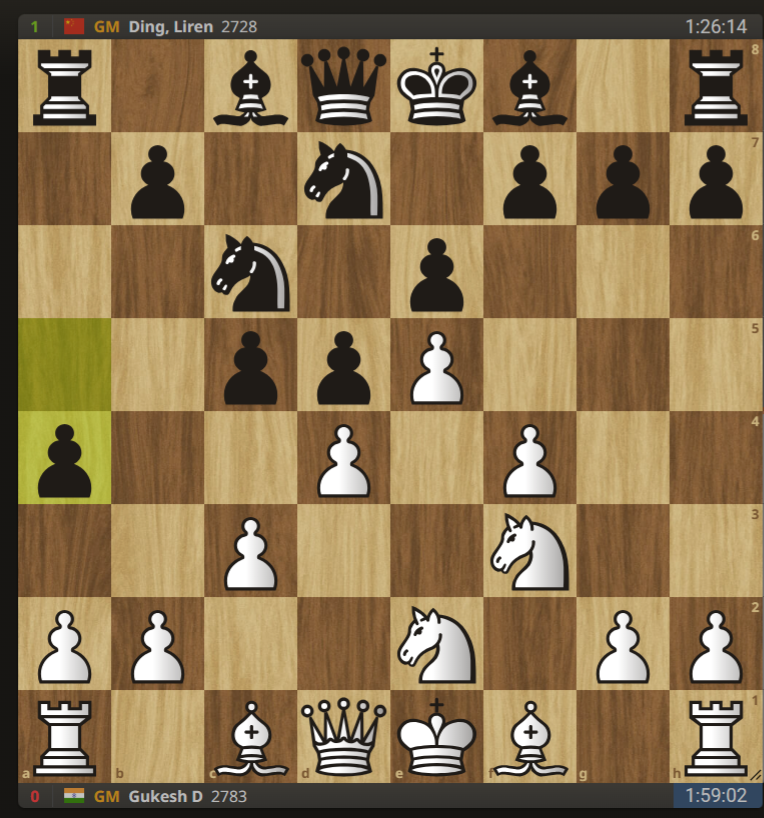
a5!
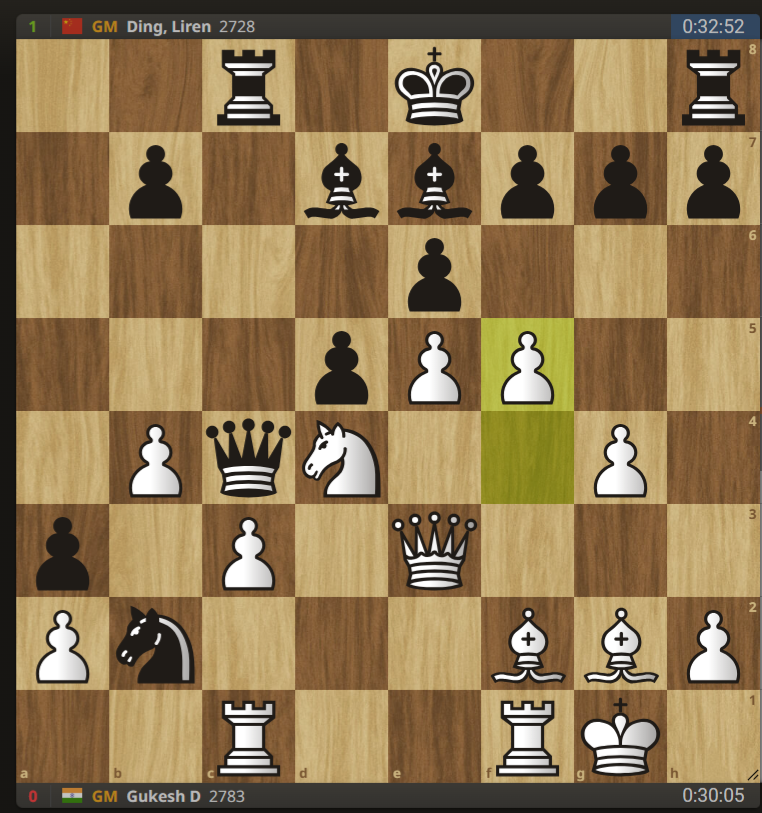
As I suspected. Pieces have been deployed to the various points where each player aims for an advantage. For black, the queenside is where most of his pieces are or aiming to get to, and for white, the kingside is where most of his pieces are.
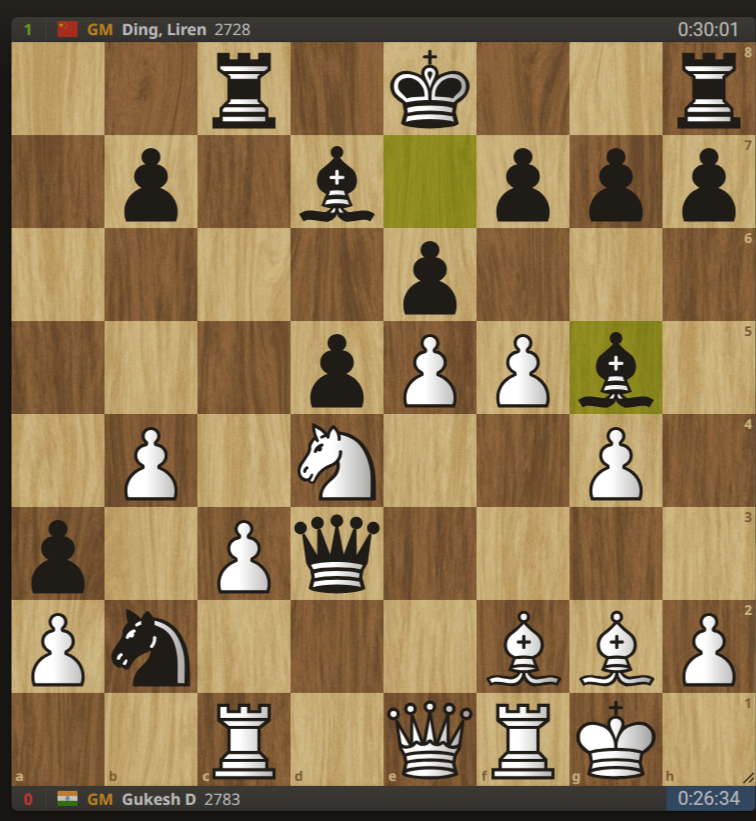
Bg5!
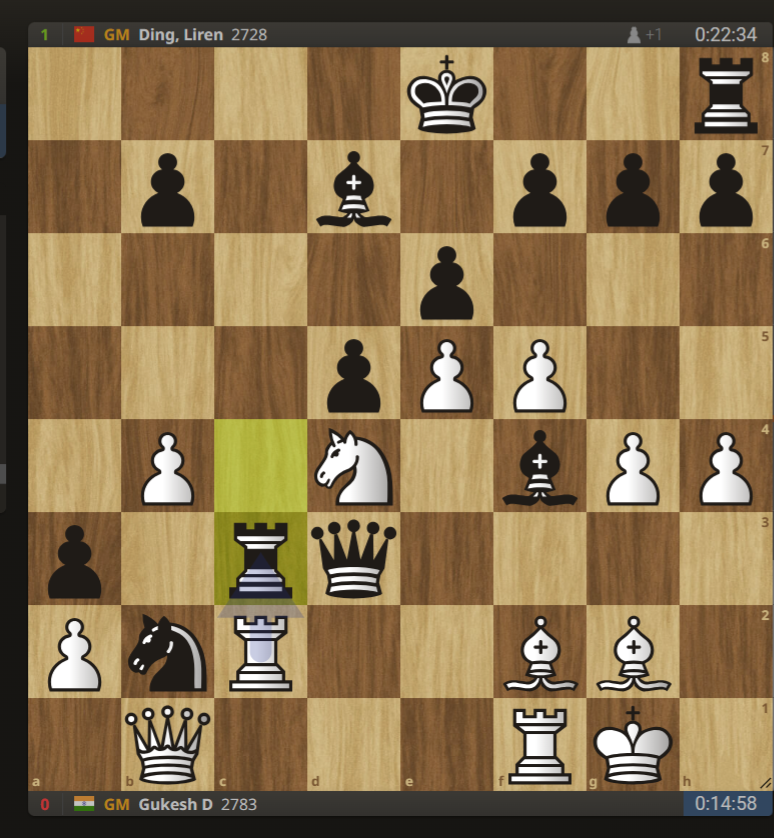
Now, white has dropped a pawn on c3. From here, the winning attempt should not be hard for a 2700-rated grandmaster, but for a regular player, it is not so clear. The winning advantage has to do with the black pawn on a3. Get rid of the white pawn on a2, and you have a passed pawn.
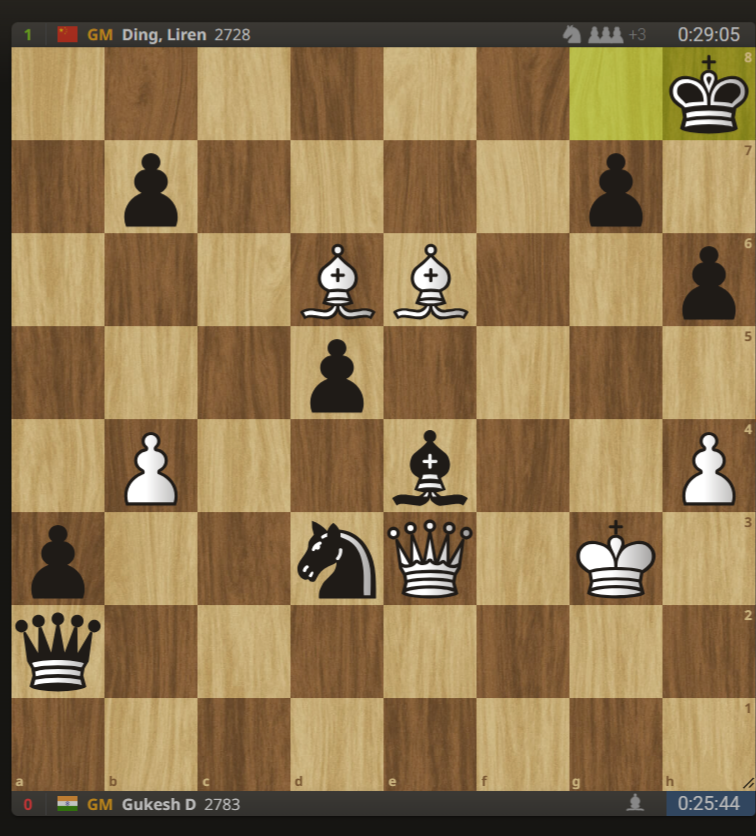
Although Ding lost the match after winning the first game, it goes to say chess is hard, and when we talk about some outstanding games from the library of French Defense, this game has to be one of the list.
Also, here is the game PGN:
[Event "FIDE World Championship Match 2024"]
[Site "Singapore SGP"]
[Date "2024.11.25"]
[Round "1"]
[White "Gukesh D"]
[Black "Ding, Liren"]
[Result "0-1"]
[WhiteElo "2783"]
[BlackElo "2728"]
[Opening "French Defense: Classical Variation, Steinitz Variation"]
1. e4 e6 2. d4 d5 3. Nc3 Nf6 4. e5 Nfd7 5. f4 c5 6. Nce2 Nc6 7. c3 a5 8. Nf3 a4
9. Be3 Be7 10. g4 Qa5 11. Bg2 a3 12. b3 cxd4 13. b4 Qc7 14. Nexd4 Nb6 15. O-O
Nc4 16. Bf2 Bd7 17. Qe2 Nxd4 18. Nxd4 Nb2 19. Qe3 Rc8 20. Rac1 Qc4 21. f5?! Qd3
22. Qe1?! Bg5 23. Rc2 Rc4 24. h4 Bf4 25. Qb1 Rxc3 26. Rxc3 Qxc3 27. fxe6 fxe6?!
28. Ne2 Qxe5 29. Nxf4 Qxf4 30. Qc2? Qc4 31. Qd2 O-O 32. Bd4 Nd3 33. Qe3 Rxf1+
34. Bxf1 e5 35. Bxe5 Qxg4+ 36. Bg2?! Bf5 37. Bg3 Be4 38. Kh2 h6 39. Bh3? Qd1
40. Bd6 Qc2+ 41. Kg3 Qxa2 42. Be6+?! Kh8 0-1
That is a wrap for this chess lecture. Subsequently, I will be doing more chess lectures, and guys, my weekly Hive chess tournament starts this coming Saturday.
For more details:


I am @samostically, I love to talk and write about chess because I benefited a lot from playing chess, and I love writing about chess.
♟♟♟♟♟♟♟♟♟



Comments